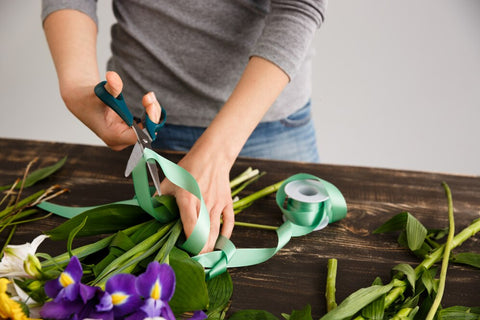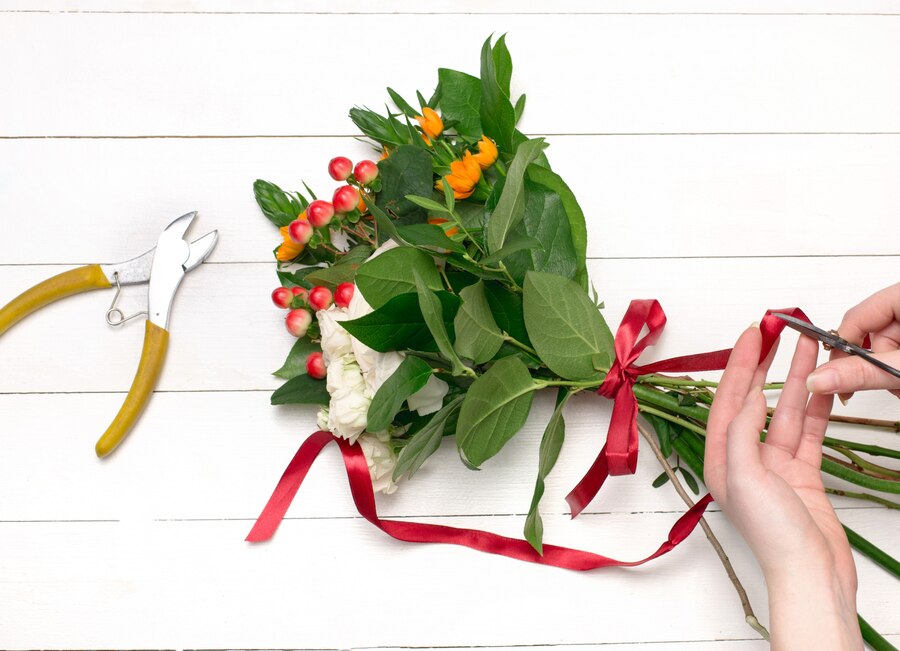Caring for your flowers at home brings a sense of fulfillment and adds a splash of nature's beauty to your living space.
Whether nurturing a delicate orchid or tending to a robust snake plant, understanding how to care for flowers effectively is crucial.
This guide will walk you through the essential techniques and tips to ensure your blooms and plants stay vibrant and healthy, no matter the season.
How to Care for Flowers: Understanding Your Plant's Needs
Every plant has its unique set of requirements for optimal growth. Understanding your plant's needs is the first step in successful flower care.
For instance, the bright and cheery sunflower thrives in full sunlight and well-draining soil, while the delicate fern prefers shaded areas and consistently moist soil.
Learning about your plant's natural habitat can provide clues on how to keep flowers alive longer.
So, take the time to research and understand the particular needs of each plant in your collection, from watering frequency to preferred soil pH, for flourishing results.
Choosing the Right Pot and Soil
Selecting the right pot and soil is crucial for plant health.
Consider the pot size – it should give your plant enough room to grow without being too spacious. A pot that's too small can constrain growth, while one that's too large may lead to waterlogging.
Good drainage is essential to prevent root rot.
For soil, opt for a mix that suits the type of plant you're growing. For example, cacti and succulents require well-draining, sandy soil, whereas tropical plants prefer soil rich in organic matter.
Hot Tip: When repotting, choose a pot that is 5 to 8 cm larger in diameter than the current one. This provides enough room for your plant to grow without overwhelming it.
For soil, a general-purpose potting mix works for most indoor plants, but specialized mixes can be used for specific plant types.

Lighting and Placement
Proper lighting is key to keeping flowers fresh and potted plants healthy. Most flowering plants need bright, indirect light to produce blooms.
However, some, like the snake plant, can tolerate low-light conditions.
Hot Tip: Place your plants near a window where they can receive natural light but avoid harsh direct sunlight, which can scorch their leaves.
Rotate your plants every week to ensure even light distribution. This prevents them from leaning towards the light source.
How to Care for Flowers in Winter
During the colder months, when sunlight is less intense, move your plants closer to the light source. Supplement with grow lights if necessary to mimic natural sunlight.
Watering Techniques
Watering needs vary significantly among different plants. Overwatering is a common mistake that can lead to root rot.
To determine when to water, check the soil moisture. For most plants, allow the top centimetre of soil to dry out before watering again.
Hot Tip: Use a watering can with a long spout to target the soil directly, avoiding wetting the leaves. This helps prevent fungal diseases.
Fertilizing for Growth
Fertilizing provides essential nutrients to your plants, promoting healthy growth.
Use a balanced, water-soluble fertilizer for most indoor plants. Apply it every 4 to 6 weeks during the growing season. Remember to follow the package instructions.
But remember, some plants, like orchids, will need specialized fertilizer and soil.
Hot Tip: Reduce fertilization frequency in winter, as plant growth typically slows down during this time.
Pruning and Deadheading
Regular pruning and deadheading are vital for the health and aesthetics of your plants.
Deadheading is cutting the spent flowers and seed heads from your flower plants, like roses or orchids, to stimulate more blooming.
Pruning is more specific. When pruning, you cut away any dead or yellowing leaves or unwanted sections, say if the plant is growing too full or losing its shape. Pruning helps to encourage new growth.
Hot Tip: Use clean, sharp scissors or pruning shears to make cuts without damaging the plant.
Cut the flower's stem just above the first healthy leaves when deadheading. With plants like peace lilies or Anthuriums, be careful not to hurt the plant when removing the long flower stem, as they are solitary "branches."
When pruning, cut the stem or branch back to where there is new growth or to the basal growth, the new growth at the base of the plant.
Creating Flowers from Your Plants
Creating bouquets from your own plants can be a rewarding experience. However, it is important to know how to care for cut flowers and the plant itself.
When cutting blooms, make clean cuts with sharp scissors and avoid removing more than one-third of the plant's flowering stems. This ensures the plant remains healthy and can continue to produce flowers.
Hot Tip: There is a sweet spot for when to cut your flowers for a vase – when they are in full bloom. If you cut them too soon, they might not bloom in the vase, but if you wait too long, they might not last.
Similar to deadheading, cut the stem above the node, where new leaves form. If you cut it between nodes, the top piece will die.
Also, if the plan is small, ensure at least 3 healthy leaves are still on the plant in the soil so it can still feed.
Pest and Disease Control
Inspect your plants regularly for signs of pests or diseases. Common pests include aphids, spider mites, and whiteflies.
Natural remedies like neem oil or insecticidal soap can effectively control infestations.
Hot Tip: Wipe down the leaves with a damp cloth to remove dust and potential pests.
Isolate new plants for a few days to prevent the spread of pests to your existing collection.
Terra Plants & Flowers: Your Destination for Plant Delivery
Looking for the perfect plant to brighten up your home?
Terra Plants & Flowers offers a wide selection of beautiful, healthy plants and pots delivered right to your door.
Whether you're a seasoned plant parent or just starting, we have everything you need to make your indoor garden a success.
Visit us today and choose from our diverse flower and plant collections to bring life and colour to any space.
